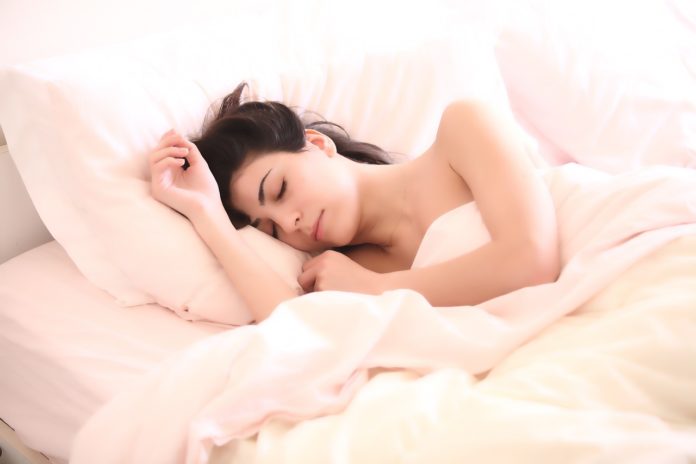According to The Sleep Council, growing numbers of people are starting to make the length and quality of their sleep a priority. This impartial, advisory organisation seeks to raise awareness of the health and mental wellbeing benefits of a good night’s sleep via its “30 Day Better Sleep Plan”. As part of developing a tailored sleep plan, individuals must revisit their sleeping environment and ensure it is conducive to good quality sleep.
Rapid advancements in the world of technology have benefitted many people across the city in the sleep department. However, there are also ways in which technology and the modern world have hindered our sleeping patterns. The advent of smartphones, tablets and high-pressure 24/7 jobs is scientifically proven to have a negative impact on our sleep quality. In order to be good to yourself, you must consider the facets that make up the perfect sleeping space.
Lighting can set the right tone for sleep
Did you know that when our eyes react to natural daylight, our brain assumes that it is time to wake up? When it is dark outside, our bodies release melatonin, which is designed to relax the body and mind, enabling us to drift off. It’s worth noting that smartphones and computer screens that emit blue light suppress levels of melatonin, preventing you from switching off. The daylight issue means that it is no surprise our bodies can take time to adjust to the British Summer Time and the lighter mornings. To guard against being rudely awoken too early by the daylight, consider fitting blackout blinds or wearing an eye mask to sleep.
A comfortable mattress leads to a comfortable night’s sleep
A comfortable bed and quality mattress that offers much-needed support is one of the key factors to achieving a better sleep pattern. Old, lumpy mattresses that lack space and support will leave you tired and sore in the mornings. Instead, consider buying a high quality mattress created with posture and support in mind, such as the ones from mattress specialists Casper. Their mattresses have been engineered with a quadruple layer of foam, including high-density memory foam, offering award-winning comfort and support that has been recognised by the likes of consumer champions Which?. On top of that, the foams are built with open cells to keep bodies cool and regulate temperatures overnight.
Cool temperatures can counterbalance evening body heat peaks
Bedrooms that are too hot or too cold can have devastating consequences on your sleep quality. Room temperatures that are between 22-24 degrees Celsius are deemed too hot, given that our body temperatures peak at bedtime. At the other end of the spectrum, rooms between 12-14 degrees Celsius will be too cold for your body to relax and unwind. The ideal bedroom temperature is thought to be between 16-18 degrees Celsius. Of course, this is an entirely personal preference, so an element of trial and error is required. Some elderly and younger people may respond better to warmer environments.
Prohibit the use of state-of-the-art gizmos and gadgets
We’ve already touched upon the negative impact of computer and phone screens on our melatonin levels, but it’s important to reinforce the problem of digital distractions in our sleeping environments. Rather than view your bedroom as an extension of your downstairs living space, it’s a good idea to transform your sleeping environment into a sanctuary away from the stresses and strains of modern-day life. Beeps, alerts and buzzes can provide enough of a distraction overnight to disturb you from your slumber, upsetting your body’s circadian rhythm in the process.
Negate the prospect of sudden, repetitive noises
A sleep-deprived bedroom is often a noisy bedroom. Those that enable noise to pollute their sleeping environment will inevitably struggle to fall asleep or enjoy an unbroken night’s sleep. Scientific studies have shown that the inconsistency of sound in our bedrooms overnight is the root cause of our bodies waking up in the middle of the night. If you are prepared to invest a little money into your new sleeping space, one of our only recommended uses of a smartphone at night would be to use the Sleep Genius app. This app emits ambient noise at the perfect frequency, blocking out external noises and contributing to an unbroken night’s sleep.
Bedroom colours that encourage relaxation and a sense of calm
Choosing the right colour of your bedroom can directly influence the amount and quality of sleep you enjoy. That’s the view of Travelodge, who recently surveyed 2,000 UK homeowners to find a direct link between average sleep and bedroom colours. It found that blues, yellows and greens were the most relaxing, calming colours, with blue bedrooms offering seven hours and 52 minutes of sleep, on average. Meanwhile darker, mixed colours such as purples and browns did not foster a good sleep pattern, with purple bedrooms offering a mere five hours and 56 minutes of sleep, on average.
A perfect sleeping space and routine is just as important to the long-term health of our body and mind as a balanced diet and regular exercise. It’s time to take charge of your sleep environment and get the sleep your 21st century lifestyle demands.







